People often confuse wontons and dumplings due to their similar appearance. To add to the confusion, both use similar ingredients and cooking methods. In truth, wontons and dumplings are quite different. While both are popular in Asian cuisine, they have different historical and cultural origins. Moreover, their shape, dough thickness, and fillings are different and vary widely. Also, the nutritional value of each depends on the ingredients and cooking method. Let us examine the differences between wonton vs. dumpling in more detail.
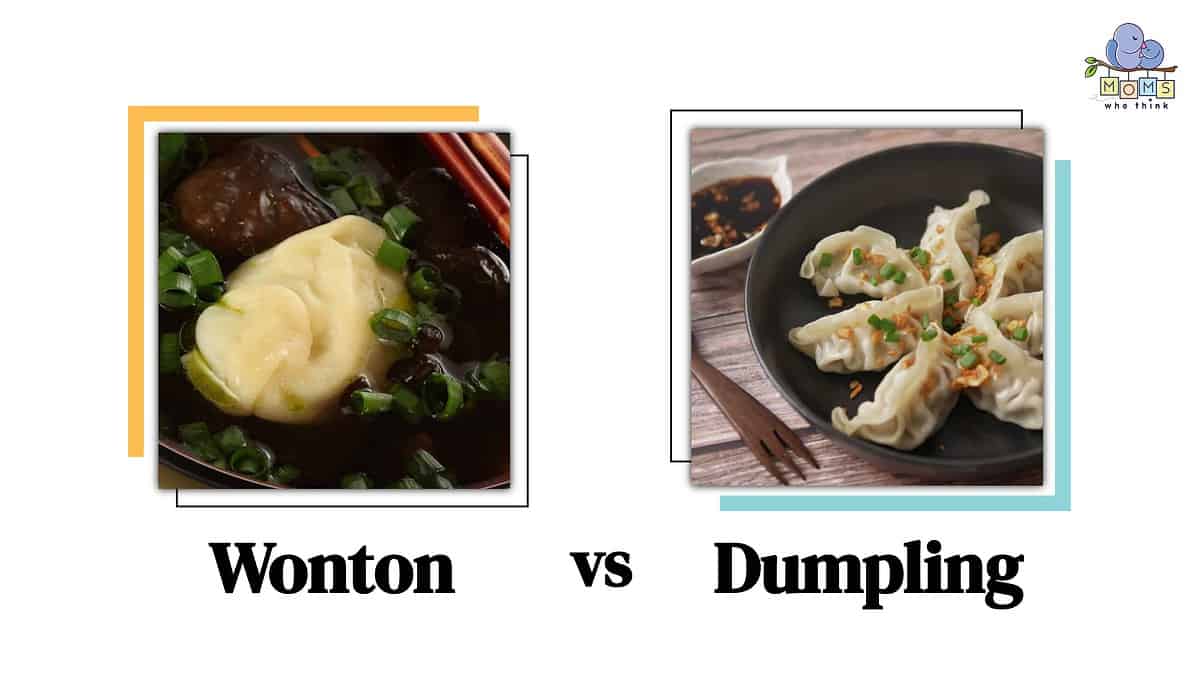
Wonton vs. Dumpling: What is a wonton?
A wonton is a traditional Chinese dumpling that people fill with chicken, seafood, or vegetables. Cooks seal the filled dough by pinching the edges together, giving the wonton its pleated shape. Furthermore, wonton dough is thin and the dumpling itself is small and compact. They also look like squares or triangles.
Most of the time, cooks prefer to boil or steam them. However, some cooks prefer to fry wontons. Moreover, the thin dough helps the filling to cook more evenly. Typically, wontons have less filling than dumplings. They commonly appear in soups with noodles and vegetables. Additionally, they are popular appetizers.
Culinary historians believe that wontons originated in China. Additionally, the name wonton comes from the Cantonese word “wān-tān,” which means “swallowing clouds.” This Chinese export is now popular throughout Asia and has spread to the rest of world.
- The must-have convenient reference guide for every home cook!
- Includes more than 8,000 substitutions for ingredients, cookware, and techniques.
- Save time and money on by avoiding trips to grab that "missing" ingredient you don't really need.
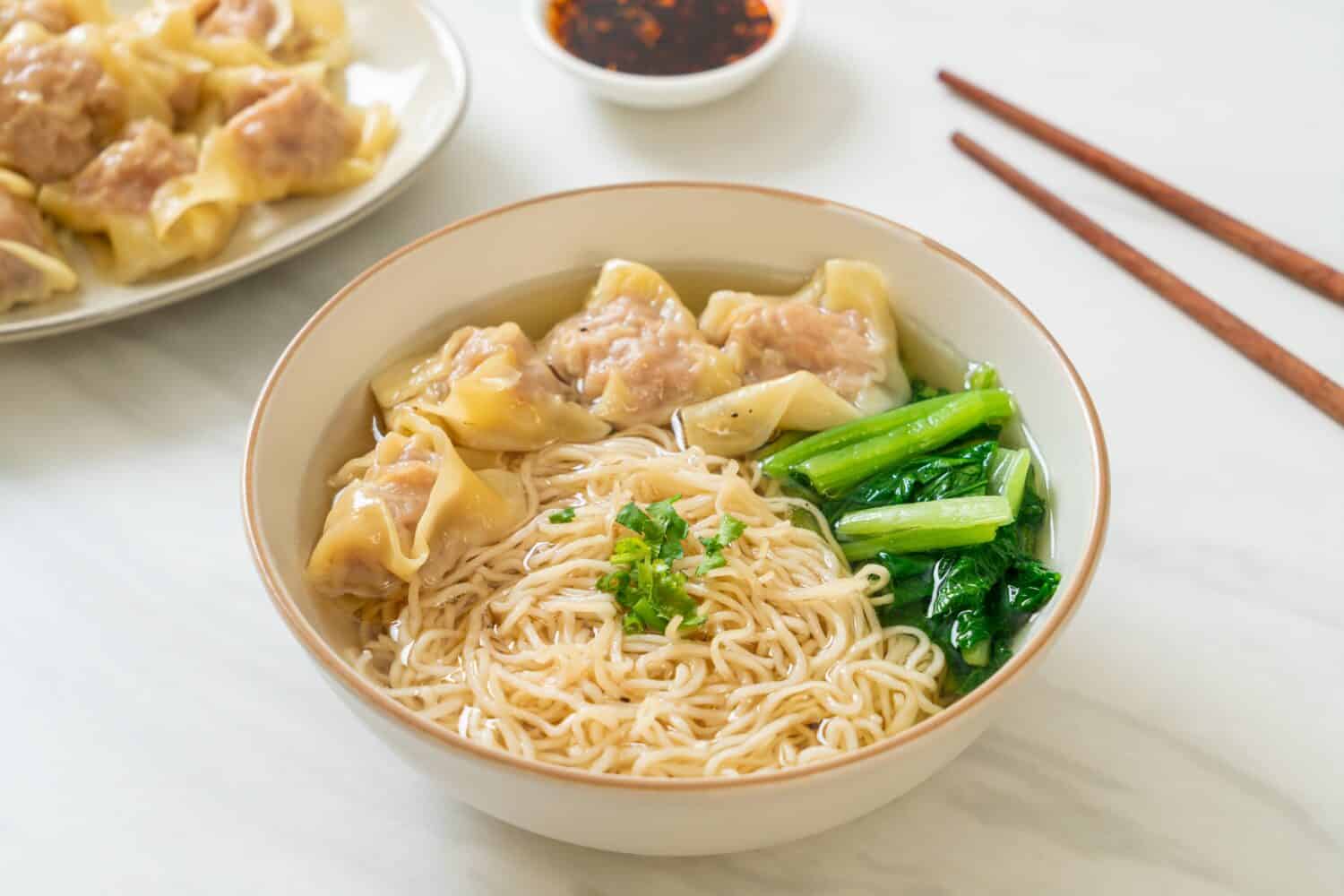
©gowithstock/Shutterstock.com
Wonton vs. Dumpling: What is a dumpling?
Dumplings come in many varieties and have different names. For instance, in Japan, people refer to dumplings as “gyoza,” while in Korea, they call them “mandu.” Moreover, dumplings have different shapes, sizes, and fillings. Typically, dumplings appear crescent-shaped.
Cooks use wheat flour and water to make the dumpling dough. Occasionally, cooks add egg to this mixture. This dough is cooked to a thick and chewy texture. Dumpling fillings include everything from jam, meat, and vegetables. Seasonings include chives, spring onions, and Chinese cabbage.
Different regions make different kinds of dumplings. Below is a list of regional dumplings.
- Chinese Dumplings (Jiaozi or Guo Tie) – Cooks boil or pan fry Jiaozi dumplings, whereas Guo Tie, also known as pot stickers, are pan-fried on one side.
- Japanese Dumplings (Gyoza) – Filled with pork, cabbage, or garlic, these pan-fried dumplings come with a dipping sauce like rice vinegar or soy sauce.
- Korean Dumplings (Mandu) – Appearing often in rice cake soup, cooks steam, boil, or pan-fry Mandu. These are popular appetizers.
- Central Asia Dumplings (Manti) – Manti dumplings are large and usually served with yogurt.
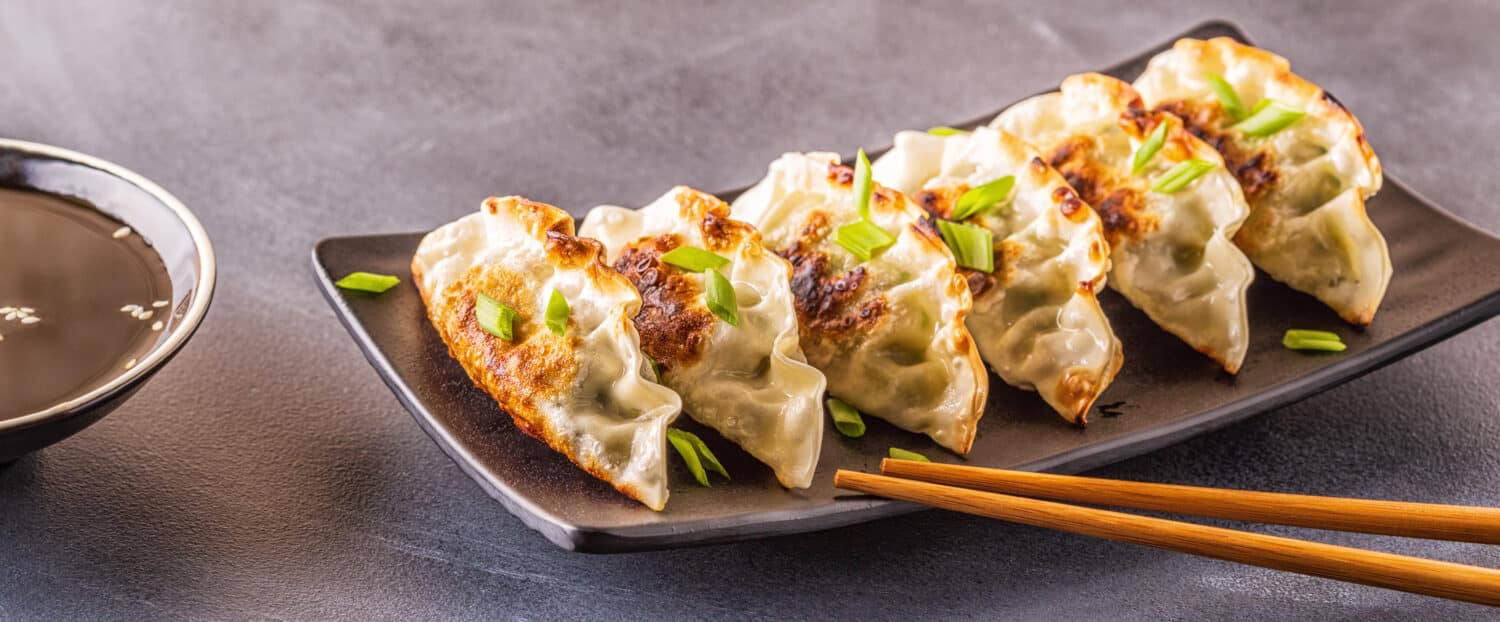
©Tatiana Bralnina/Shutterstock.com
Wonton vs. Dumpling: What makes them different?
Now that we know what a wonton and a dumpling are, what makes them different? There are five things that separate a wonton from a dumpling.
| Wonton | Dumpling | |
|---|---|---|
| Dough Thickness and Shape | Their dough is thin. The shape is usually triangular or square. | Thicker and sturdier than wontons, they usually have half-moon shapes. |
| Filler Ingredients | Less filling is required in wontons. They contain minced meat and vegetables. | Dumplings have savory and sweet fillings, containing everything from meat to fruit. |
| Cooking Methods | Usually boiled or steamed, they appear in soups. | Cooks boil, steam, pan-fry, or deep-fry dumplings. They appear as appetizers and in main courses. |
| Pleating | Pleat wontons by folding the wrapper diagonally in half and sealing the edges. This gives them their triangle or square shape. | Although typically pleated in moon-shapes, dumplings have a variety of pleating styles. |
| Cross-cultural Differences | A staple of Chinese cuisine, they are part of the country's culinary history. | Dumplings appear in many cultures. Each one gives the dumpling a regional variation and cooking style. |
Unlike dumplings, the appearance, filling, and dough of wontons stays the same. However, dumplings come in a variety of styles, depending on the region and cooking method used to prepare them.
Wonton vs. Dumpling: Nutritional Comparison
Calories and nutritional information for wontons and dumplings depend on the ingredients, how they are cooked, and the serving size. However, wontons and dumplings have similar protein, fat, and carbohydrate levels. The differences between them are minor, so the choice between the two essentially comes down to personal preferences.
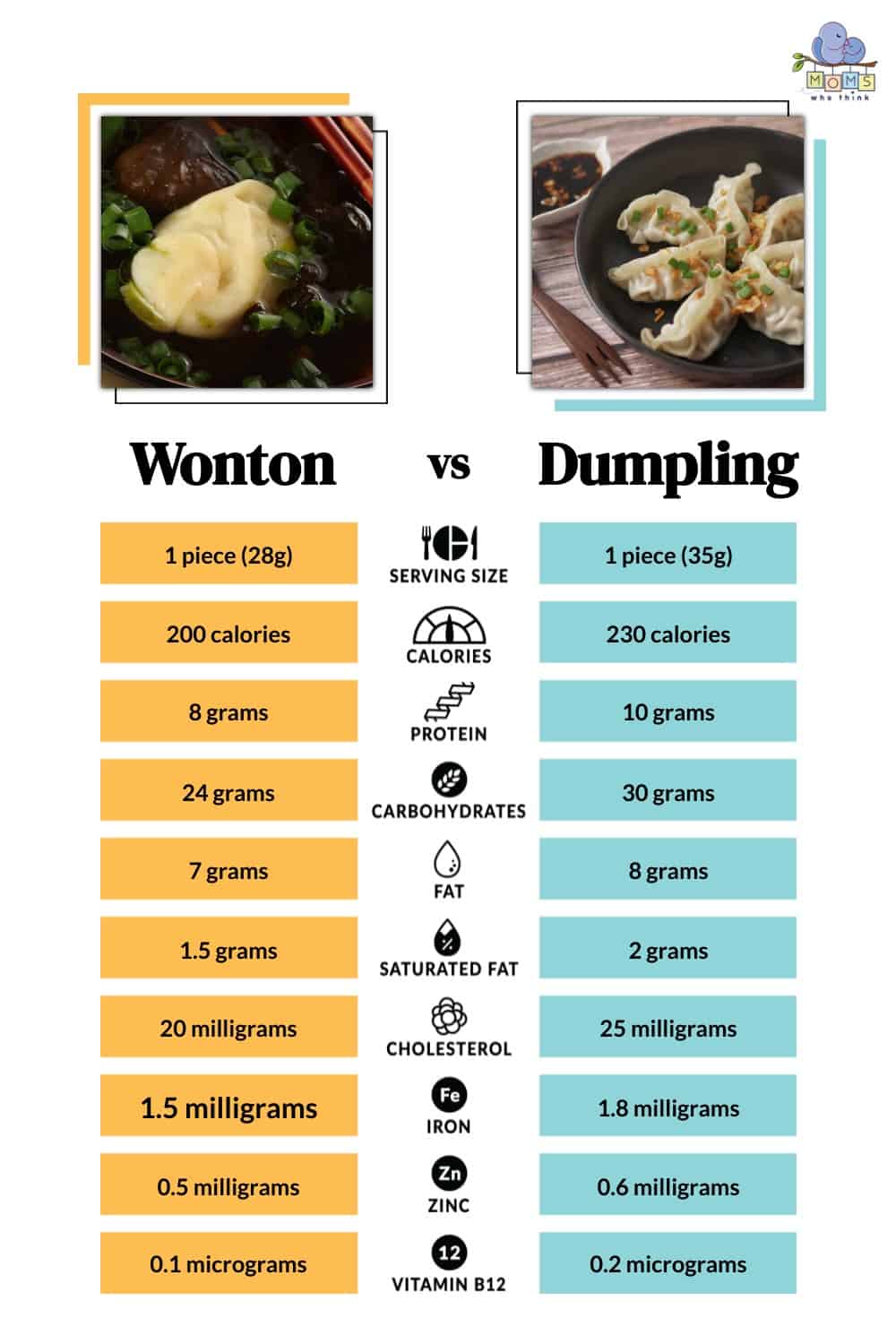
Here are a few suggestions to make both healthier food options.
- Since the ingredients of both vary so wildly, opt for fillings with lean protein (like chicken and shrimp) or vegetables. These will provide more nutritional value.
- Fried foods have more calories and fat. If possible, choose boiled or steamed wontons or dumplings.
- Dumplings and wontons contain a lot of sodium, so this may be a concern if you are watching your salt intake.
Both can be eaten in moderation as part of a balanced diet. Choose the options that line up with your health goals and dietary preferences.
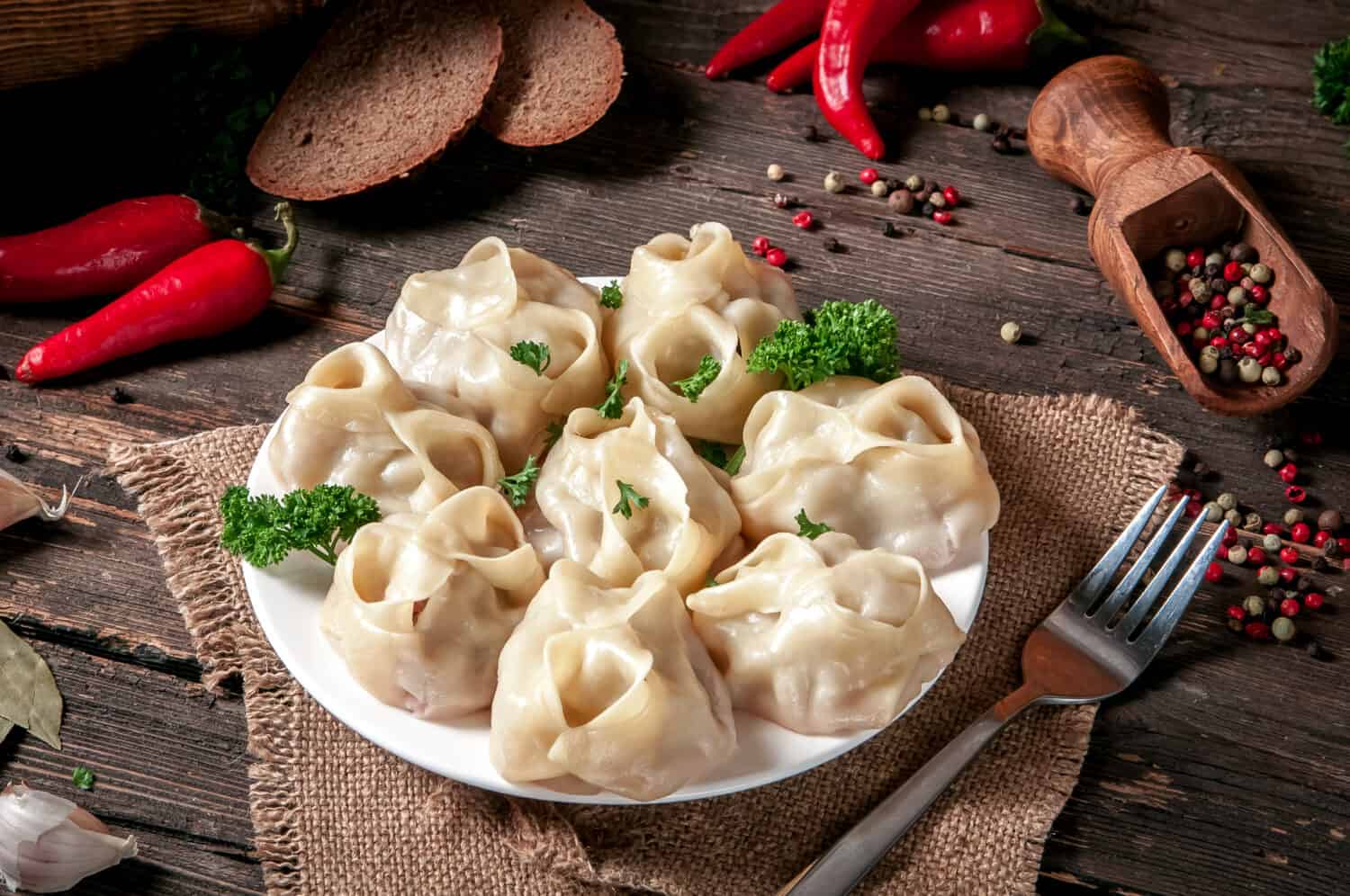
©Juri Yeremin/Shutterstock.com
One Final Note
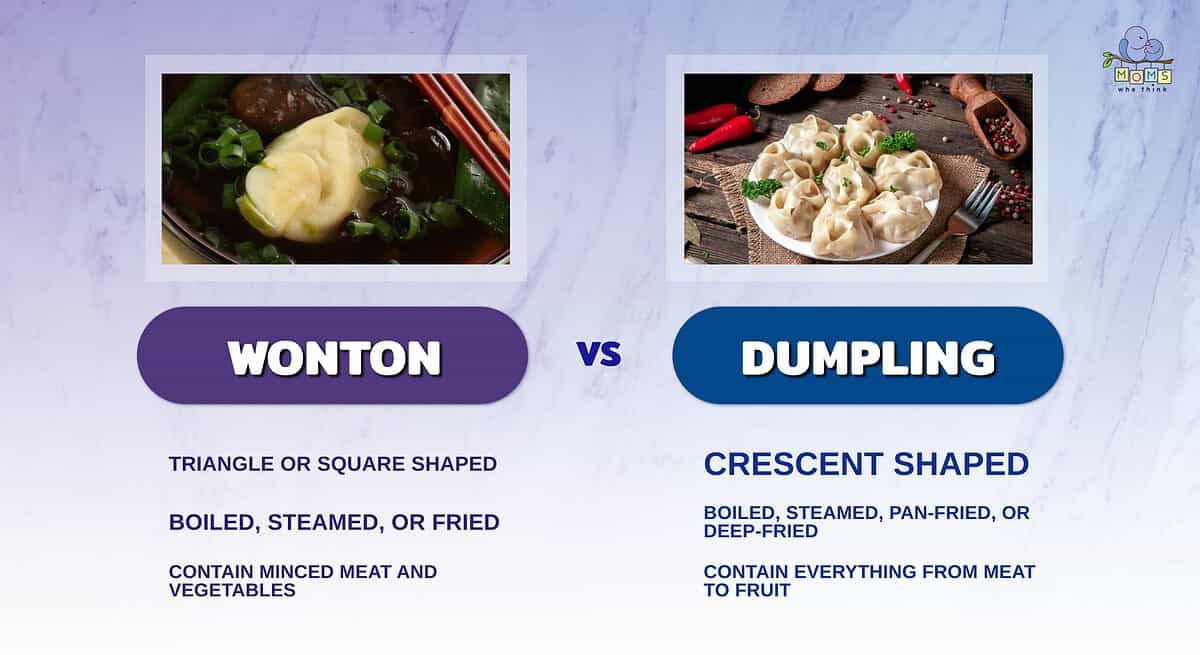
Wontons and dumplings are popular dishes made from dough and filled with a variety of ingredients. There are key differences between the two foods, however. For instance, wonton dough is much thinner and usually has a square or triangle shape. Whereas dumplings have a thicker, chewier dough with a crescent moon shape. Dumplings have many variations as the result of cultural influences. However, despite spreading across the world, wonton preparation has remained essentially the same. Enjoy both foods in moderation as part of a healthy diet.
You need to give this turkey dumplings recipe a try:
Print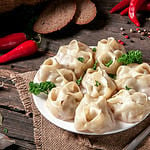
Apple Dumplings
Ingredients
1 pastry for 2-crust pie
Syrup Ingredients:
1 cup granulated white sugar
2 cups water
3 Tablespoons butter (softened)
1/4 teaspoon cinnamon
1/4 teaspoon nutmeg
Filling Ingredients:
6 apples (peeled and cored)
1/2 cup granulated white sugar
1 1/2 teaspoons cinnamon
1 1/2 teaspoons nutmeg
2 Tablespoons butter (softened)
Instructions
1. Roll pastry slightly less than 1/8″ thick. Cut into 7″ squares.
2. Bring syrup ingredients to boil. Boil 3 minutes.
3. Put apple on center of each pastry square. Fill with mixture of sugar, cinnamon, nutmeg. Dot each with teaspoon of butter.
4. Bring points of pastry up over apple and overlap.
5. Place a few inches apart in baking pan. Pour 1 cup hot syrup mixture around dumplings.
6. Bake at 425 degrees F for 45 minutes. Just before serving pour rest of warm syrup over dumplings and serve with cream.
The image featured at the top of this post is ©Tatiana Bralnina/Shutterstock.com.
- The must-have convenient reference guide for every home cook!
- Includes more than 8,000 substitutions for ingredients, cookware, and techniques.
- Save time and money on by avoiding trips to grab that "missing" ingredient you don't really need.

